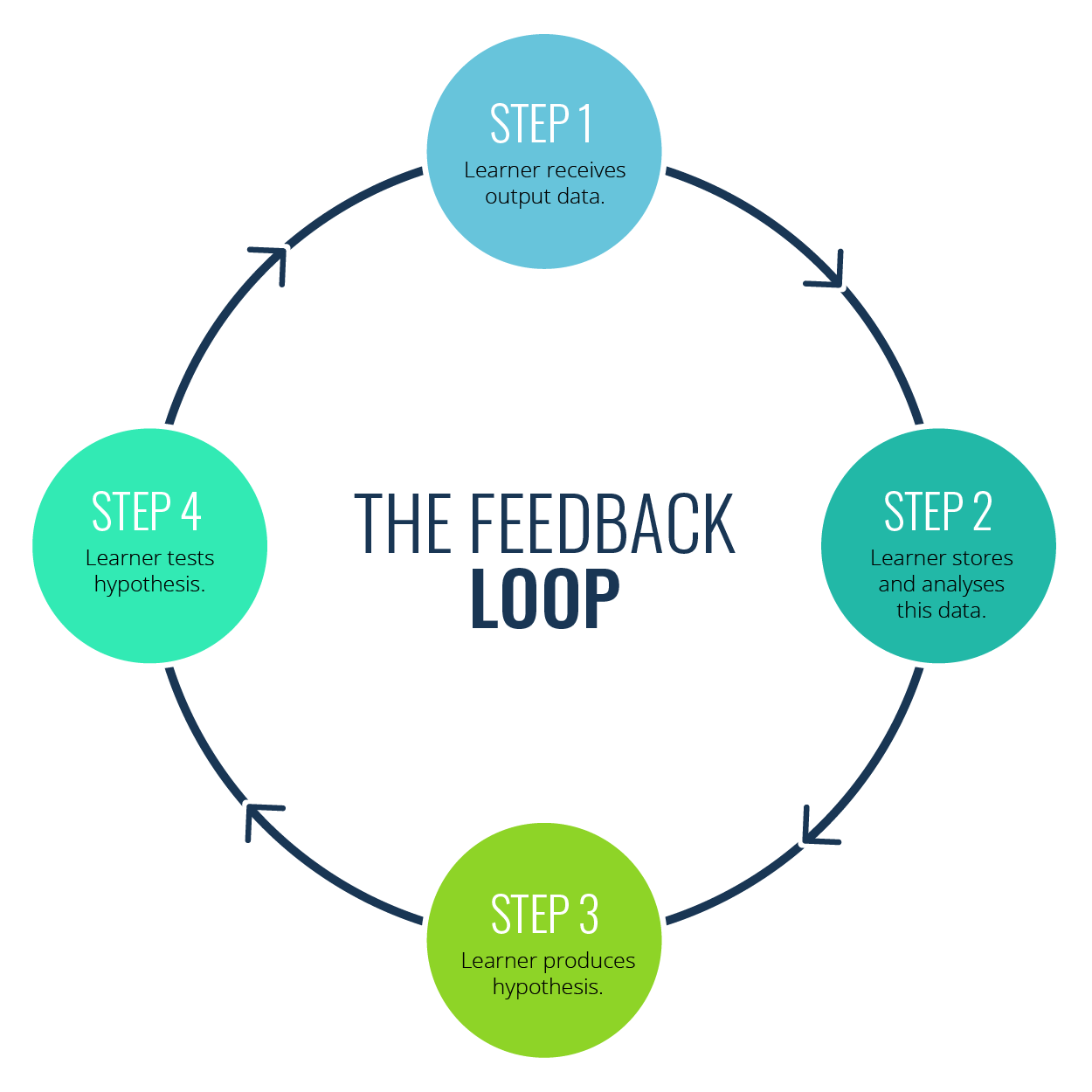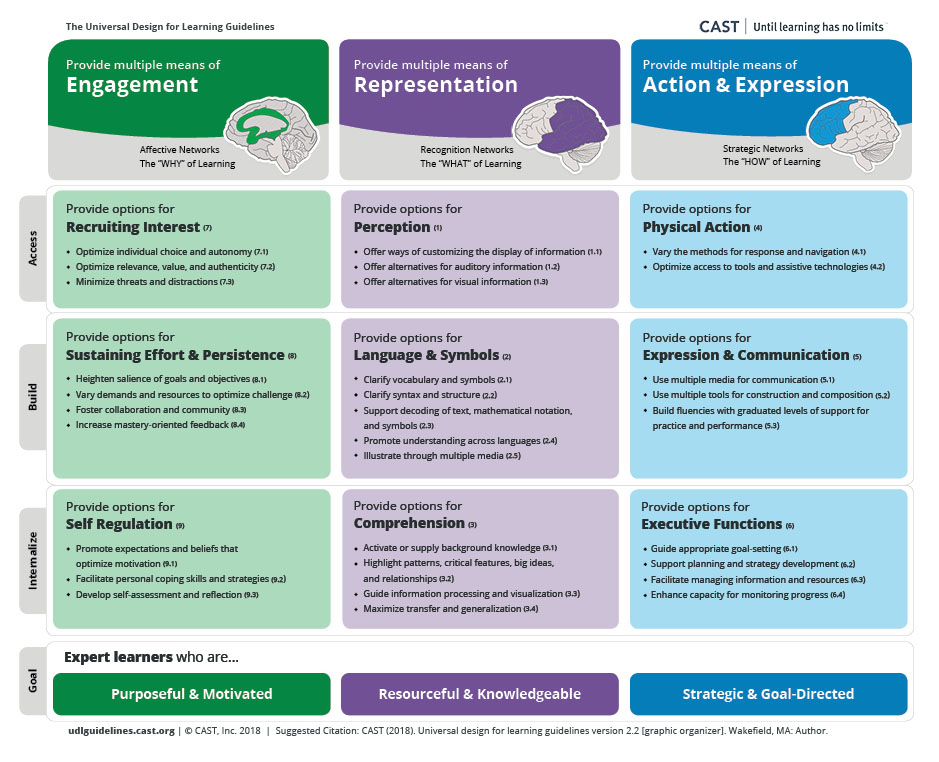Creating Powerful Feedback Loops in Higher Education
Author : Jack Brophy
Introduction
Feedback loops in higher education are often overlooked, yet they are critical for meaningful student learning. Too often, traditional assessments provide grades in isolation — sometimes accompanied by a brief comment delivered weeks after submission. With little opportunity to apply that feedback, studies suggest that students struggle to improve in their next assignment through an inability to close the loop in learning.
Feedback loops offer a solution. By creating cycles of reflection, adaptation, and iteration, they ensure that assessment drives growth rather than ending in a grade. At Anytime Creativity, we’ve embedded these principles into our own strategy, helping educators and institutions design processes that continuously improve learning outcomes.

What are Feedback Loops in Education?
In essence, a feedback loop is the process of providing, receiving, and acting on information about performance or understanding. The loop begins when an action becomes open to input and closes when learners or educators adapt based on that input. Unlike one-off evaluations, this format creates an ongoing cycle of reflection and refinement which strengthens and validates an idea.
Feedback loops are vital in the context of higher education for a variety of reasons:
- Clarity and direction – Students understand exactly where they stand and what needs improvement.
- Opportunities to improve – Formative feedback is most effective when it promotes self-regulated learning. Nicol & Macfarlane-Dick’s seven principles show that feedback is powerful only when students use it to close the gap between current and desired performance
- Ownership of learning – By applying iteratively, students develop self-regulation, resilience, and confidence in their abilities.
- Preparation for the real world – Just like in the workplace, students learn to revise, adapt, and refine their work through ongoing iterations.
Why use Feedback Loops in Education?
Creating a self-sustaining iterative process addresses three pressing challenges: disengagement, skills misalignment, and static curriculum models.
- Boosting student engagement: Research on active learning shows students thrive when they can reflect and apply changes immediately (see our blog on Active Learning). Feedback loops reinforce this process by making learning interactive and iterative.
- Aligning learning with workplace skills: Authentic assessment demonstrates how authentic assessment mirrors professional environments, where projects evolve through revision and collaboration. Feedback loops ensure students don’t just deliver an answer but learn how to refine and adapt.
- Improving teaching and program quality: Feedback loops give students more than just grades — they provide opportunities to act, reflect, and try again. When feedback is built into the learning process rather than delivered at the end, students experience a more supportive and adaptive environment that directly improves their performance and confidence.
Implementing Effective Feedback Loops
Creating meaningful ongoing guidance requires intention and structure. This is a process to be mapped out as opposed to a feature to be added sparsely. Feedback loops are excellent when they are built into the core module structure, both on the educator and student side. Understanding how and where to give guidance is a critical component of this.
- Ensure timeliness and efficiency: Delayed responses weaken the impact so be sure to streamline with low-effort strategies like digital polls or structured peer review. Aim for feedback that students can act on during the same module.
- Close the loop: Feedback only matters if learners or educators act on it. Encourage reflection, revision, and iteration.
- Diversify sources: Combine self-assessment, peer input, and instructor feedback for a fuller picture. Share the responsibility — use peer-led commentary and institutional support systems.
- Embed reflection: Build space in lessons or assessments for students to interpret and respond to feedback.
- Leverage technology: Use digital tools for polling, collaborative editing, and automated progress tracking. Focus on actionable insights rather than collecting feedback for its own sake.
- Student resistance: Clearly explain the purpose of feedback loops and show how they improve outcomes.
Tools that Support Feedback
- AI-powered idea assistants: Customised GenAI assistants, such as in Anytime Creativity, give students instant, low-stakes feedback in the early stages of idea development. Studies of formative feedback practice show that timely and actionable feedback fosters self-regulation, helping learners spot gaps before moving forward.
- Peer feedback platforms: Structured peer review develops students as both feedback providers and recipients. Carless has shown that peer interaction encourages deeper engagement, with students developing critical thinking skills as they analyse different approaches to the same task.
- Expert and practitioner input: Involving subject specialists or industry mentors simulates the type of feedback graduates will encounter in professional environments. This validates student work against real-world standards and models the iterative, collaborative nature of workplace problem-solving.
- Educator-led assessment panels: Guided educator feedback, delivered through structured rubrics or prompts, provides targeted insights students can act on. Research by Nicol and Macfarlane-Dick also highlights that when criteria are transparent and feedback is dialogic, learners are much more likely to apply it effectively.
Together, these tools illustrate how feedback can progress from fast, formative input (AI and peers) to deeper, expert validation (educators and industry). A diverse feedback ecosystem enables students to revise, adapt, and refine their work more effectively, preparing them for both academic and professional success.
Final Thoughts
Feedback loops aren’t just mechanisms for evaluation — they’re engines of growth. By embedding them into teaching, assessment, and program design, higher education can become more adaptive, equitable, and future-focused. For academic leaders and educators alike, the power lies not in providing grades, but in ensuring the assessment method reflects the real-world.
If you’re looking to make your teaching more responsive and student-centred, start small: one loop, one adjustment, one cycle at a time.
Reach out to understand how we’ve implemented feedback systems in a diverse range of modules.
Frequently Asked Questions About Feedback Loops in Education
1. What is a feedback loop in higher education?
A feedback loop is a cycle where students or educators receive feedback, act on it, and adapt their learning or teaching. Unlike one-off evaluations, it creates continuous improvement.
2. Why are feedback loops important for students?
Feedback loops help students refine their understanding, build resilience, and develop skills through iteration. They encourage reflection and self-regulated learning, preparing students for lifelong professional growth.
3. How do feedback loops improve teaching practice?
By gathering and acting on feedback, educators can adjust their teaching strategies, materials, and assessments in real time. This responsiveness increases student engagement and learning effectiveness.
4. What role do feedback loops play in curriculum design?
At the program level, feedback loops collect data from students, faculty, and employers to shape courses that remain relevant, inclusive, and aligned with workplace needs.
5. What are examples of feedback loops in higher education?
Examples include peer review, mid-semester surveys, iterative project submissions, employability surveys, and external examiner reports — all designed to inform improvement.
6. How can technology support feedback loops?
Digital platforms enable real-time polling, collaborative feedback, automated grading, and data analytics. These tools streamline feedback processes and make them more actionable.
7. What challenges exist in creating feedback loops?
Challenges include time constraints, student resistance, and faculty workload. Solutions involve starting small, sharing responsibility, and prioritising feedback that leads to actionable change.



